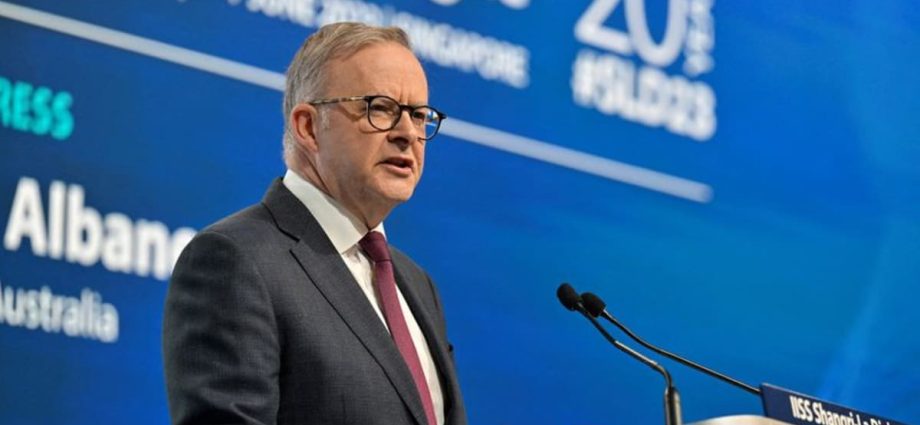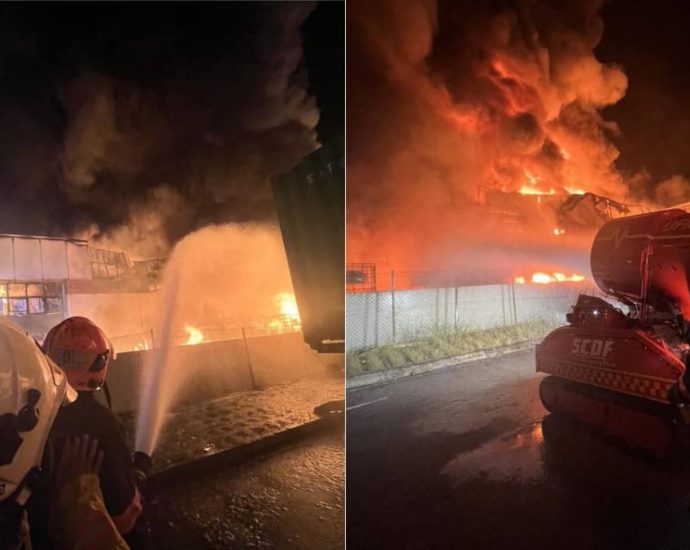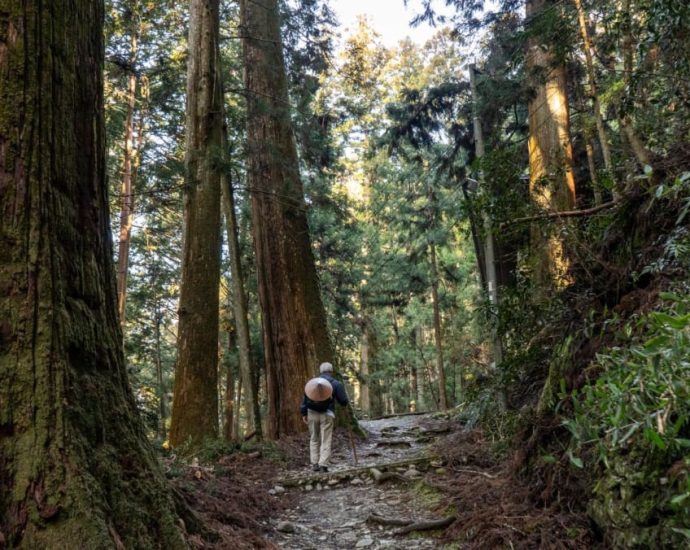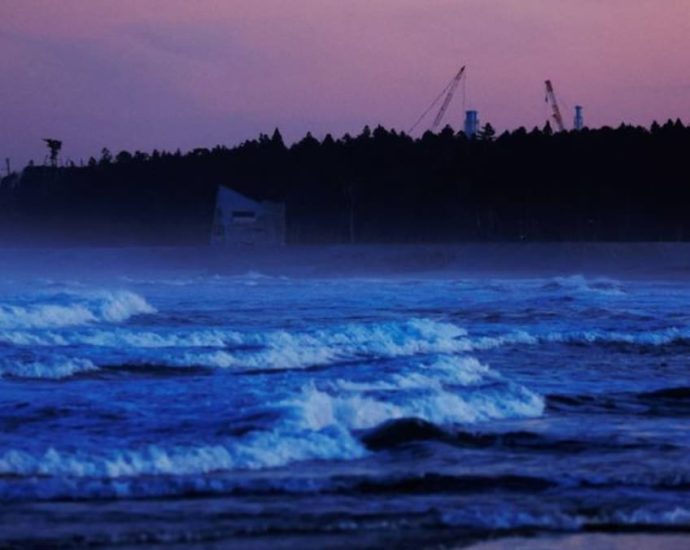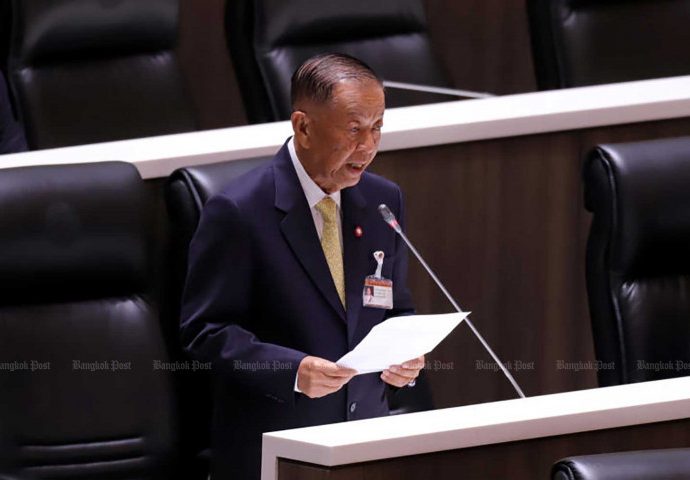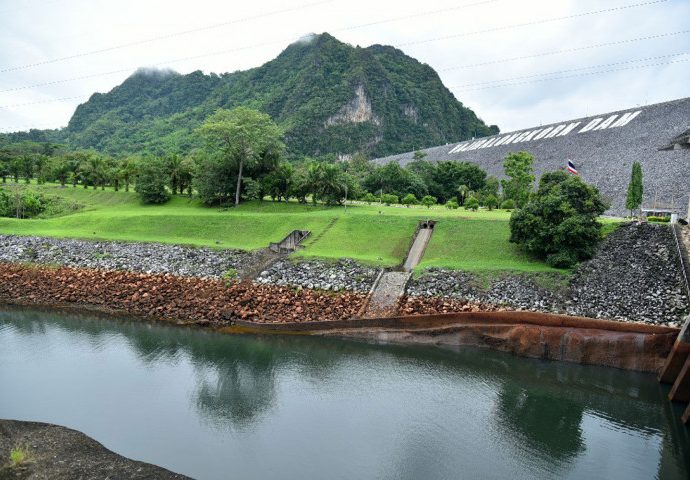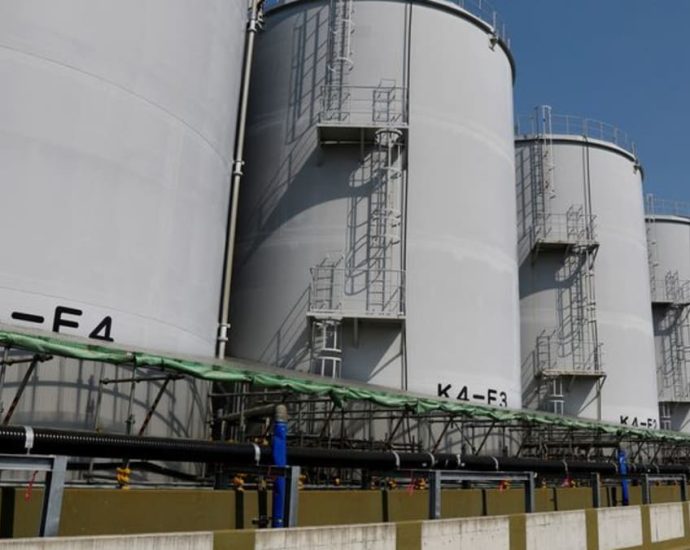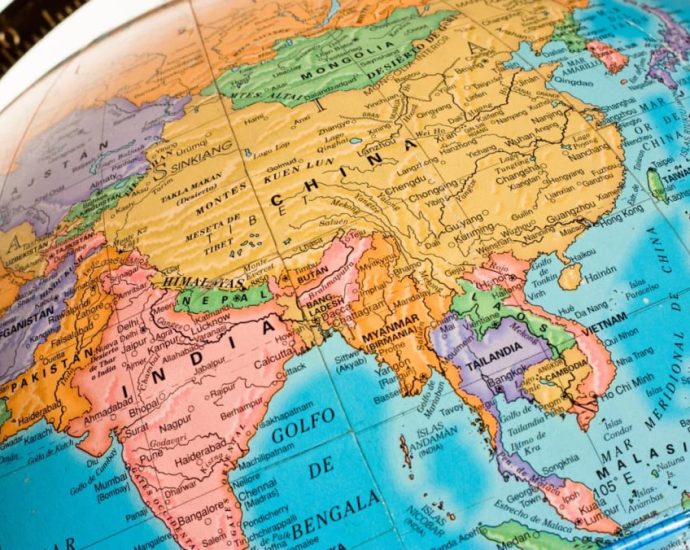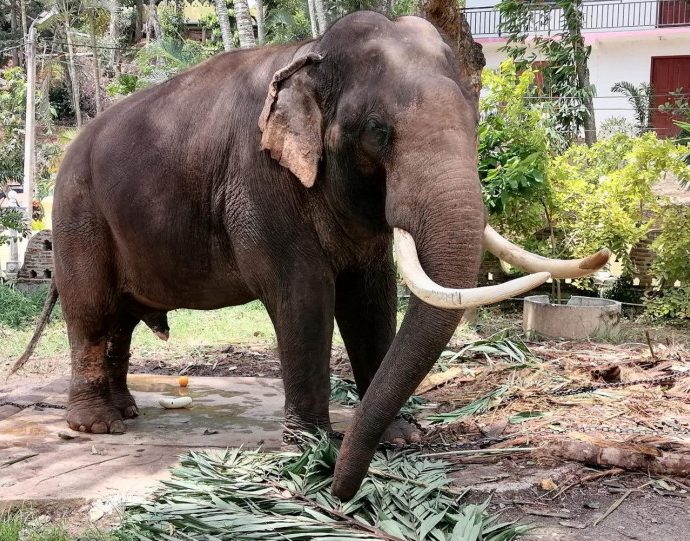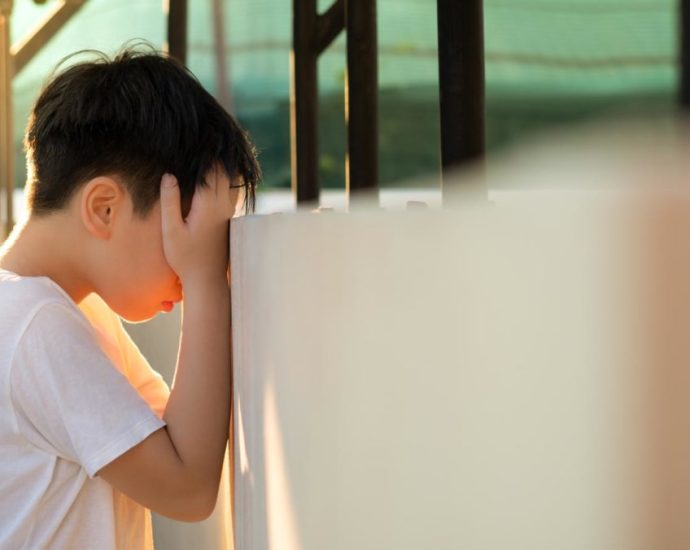Australia PM says Hong Kong bounty on overseas activists ‘unacceptable’
In a radio interview on Wednesday, Hui said Australia’s Department of Foreign Affairs and Trade had contacted him to offer protection. Yam confirmed to Reuters he had also been offered protection. Australia suspended its extradition treaty with Hong Kong in 2020, and a foreign interference law makes it illegal forContinue Reading
Fire size of football field engulfs Tuas factory storing chemicals
SINGAPORE: An industrial fire the size of a football field broke out in Tuas early on Wednesday (Jul 5), said the Singapore Civil Defence Force (SCDF). The fire “fully engulfed the premises”, which stores and distributes chemicals, said SCDF. SCDF was alerted to the fire at 11 Tuas Link 1Continue Reading
88 temples and breathtaking views: What itâs like to go on Japanâs Shikoku pilgrimage trail

In total, over the course of my 28 days spent visiting all 88 temples, I was also given: 700 yen (about S$6), 11 candies, seven small cakes, seven car rides, six mandarin oranges, five rice balls, three cookies, three chocolates, three cups of green tea, two crackers, two mochi, two soda cans, two multipurpose cloths, two yuzu juice cartons, one yokan (a red bean jelly snack), one bicycle (lent to me for half a day), one bag of steamed chestnuts, one bag of cherry tomatoes, one lunch and one bowl of homemade udon.
The pilgrimage’s temples are scattered along the perimeter of the island – some near the coast, and some farther into the mountainous interior. Some are grouped together, and others are 50 miles apart.
As a pilgrim, I often arose early – by 5.30am in the spring – and spent a full day on the road. About 80 per cent of the route is on asphalt, mostly through open fields and small towns and past beautiful coastline. I spent a few days climbing up and down mountain peaks.
The fading of Japan’s rural population is dramatically evident on Shikoku. Young people have fled to the cities or to other islands that offer a better quality of life. My experience confirmed as much: Nearly all of the young people I saw were in the capitals of the island’s four prefectures.
For breakfast and dinner, many pilgrims take advantage of home-cooked meals provided by most minshuku, or family-operated bed-and-breakfasts, and ryokan, traditional Japanese inns. These meals usually consist of rice, miso soup, fish and pickled vegetables. For lunch, depending on one’s location, convenience stores can provide a quick bite.
Japan to prepare for August start of Fukushima water release: Report
TOKYO: The Japanese government is looking to start the release of treated radioactive water from the wrecked Fukushima Daiichi nuclear plant as early as August after receiving a stamp of approval from the UN’s nuclear watchdog, the Nikkei reported. In a major milestone for the process of decommissioning the powerContinue Reading
Prachachat board dissolved as Wan takes up new post

The resignation of Wan Muhamad Noor Matha as leader of the Prachachat Party after he was elected as the new House speaker on Tuesday has left the party leader’s position vacant and resulted in the party’s board being automatically dissolved.
The party will have to find a new leader and appoint a new board, said Tawee Sodsong, a Prachachat list MP who now serves as acting secretary-general of the party.
He was speaking after Mr Wan was elected the new House speaker on Tuesday.
A source from the party said Mr Wan had tendered his resignation on Monday after the Move Forward Party (MFP) and Pheu Thai Party had both agreed to nominate him for the role of House speaker.
Under the constitution, a House speaker is required to maintain political neutrality by not holding a position in any political party.
Worawi Makudi, an acting party deputy leader, now also serves as an acting party leader, said the same source.
Pol Col Tawee dismissed rumours that someone has already been chosen to succeed Mr Wan, saying the party had yet to discuss the matter.
A meeting has been convened today among key party figures to discuss the selection of a new board and the date for organising the party’s next general assembly, which is when its new leader will be chosen, said Pol Col Tawee.
Dry spell could last into 2024

Much of the country is experiencing below-average rainfall due to the El Nino phenomenon, and this is only likely to intensify in November and could even linger until early next year, according to the Thai Meteorological Department (TMD).
TMD director-general Chomparee Chompurat said drier-than-usual weather had been reported in the North, Northeast, the Central Plains region, including Bangkok and its vicinity, the upper South and the western provinces, despite the rainy season starting over a month ago.
From Jan 1 to July 2, rainfall nationwide was 25% below average, and dry spells have been forecast in many areas until July 17, according to the TMD.
Meanwhile, Office of the National Water Resources (ONWR) director-general Thanaroj Woraratprasert said the country’s four main dams — Bhumibol, Sirikit, Kwai Noi Bamrung Daen and Pa Sak Jolasid — are at an average of 40% capacity.
Recent heavy rainfall in Nan helped increase water levels in the Sirikit Dam downstream of Uttaradit.
CNA Explains: Why is Japan releasing Fukushima wastewater into the Pacific and how safe is it?

IS THE TREATED WATER SAFE?
In IAEA’s final report, it said that the “controlled, gradual discharges of the treated water to the sea … would have a negligible radiological impact on people and the environment”.
TEPCO also told National Geographic that the impact of the treated wastewater being released into the ocean on the public and the environment will be minimal.
Even though tritium has a radioactive half-life of 12.32 years, the wastewater has a short biological half-life of seven days to 14 days in the human body, according to the IAEA.
“The biological half-life of a chemical (for example, a drug) in a living organism is the time it takes for half of that chemical to be depleted or eliminated from the body,” it added.
“The controlled discharge of wastewater with small amounts of radioactive tritium happens regularly at nuclear sites all over the world,” Professor Jim Smith, an environmental scientist at the University of Portsmouth, told Science Media Centre.
IAEA expert Professor Mikhail Balonov shared the same sentiments, adding that nuclear facilities in other countries release more tritium in their wastewater each year, in comparison to the level of tritium in the wastewater that Japan intends to release.
Online media collective The Conversation reported that about 8.4kg of tritium is already present in the Pacific Ocean, which is small in comparison to the total amount in Fukushima’s wastewater at 3g.
Prof Smith said: “Claims have been made about significant risks to the Pacific Ocean ecosystem from the planned Fukushima release. But these are not founded in scientific evidence. Tritiated water can damage DNA if ingested, but it is very weakly radiotoxic and does not biomagnify in the food chain so risks are extremely low.”
However, Associate Professor Kumpei Hayashi at Fukushima University told The Associated Press the level of tritium is “still worrisome when it comes to the ageing problems that will emerge in 20 years or 30 years”.
The American Association for the Advancement of Science also reported that more dangerous isotopes with longer radioactive lifespans – ruthenium, cobalt, strontium, and plutonium – can slip through the ALPS process at times. TEPCO noted that the isotopes are present in 71 per cent of the tanks on site.
“These radioactive isotopes behave differently than tritium in the ocean and are more readily incorporated into marine biota or seafloor sediments,” marine chemist Ken Buesseler told the association.
WHO IS MONITORING SAFETY STANDARDS?
The IAEA on Tuesday said that it will continue its safety review during the discharge of wastewater, while maintaining an on-site presence and providing “live online monitoring on its website from the discharge facility”.
“This will ensure the relevant international safety standards continue to be applied throughout the decades-long process laid out by the government of Japan and TEPCO,” said Grossi.
The agency’s task force, comprising 11 experts from the likes of Australia, Canada, France and the United Kingdom, will also “serve as the primary source for the technical and regulatory expertise needed to complete the IAEA’s review”.
Grossi added: “The IAEA will continue to provide transparency to the international community, making it possible for all stakeholders to rely on verified fact and science to inform their understanding of this matter throughout the process.”
IAEA also said it would carry on with regular reporting to keep the public and other countries informed of the latest developments.
HOW IS THE WORLD REACTING?
Japan’s plan to release the treated wastewater into the ocean has been met with protests from fishing communities in Fukushima, who are worried customers will shun their catches, despite strict testing protocols for food from the region.
Although TEPCO has been engaging with the communities and other stakeholders, fishing unions in Fukushima have urged the Japanese government for years not to release the water, arguing it would undo work to restore the damaged reputation of their fisheries.
A petition from the regions around the plant has garnered more than 250,000 signatures since the proposal was first made.
Through its embassy in Japan, Beijing also said the IAEA report cannot be a “pass” for the water release and called for the plan’s suspension.
Chinese Foreign Ministry spokesman Wang Wenbin also warned that the proposed release carries risks for neighbouring countries and Pacific Island nations, with Bloomberg quoting him as saying the ocean is “not Japan’s private sewer”.
Some South Koreans are also panic-buying salt due to contamination fears once the treated wastewater is released.
The rush to stock up on salt contributed to a nearly 27 per cent rise in the price of the commodity – compared with two months ago – in South Korea in June, though officials said the weather and lower production were also to blame.
Bloomberg also reported that the Pacific Islands Forum, consisting of 18 nations including Fiji and Australia, urged Japan to “consider alternatives and called for additional discussions on the risks”.
Commentary: The Global South is on the rise – but what exactly is it?

Until then, the more common term for developing nations – countries that had yet to industrialise fully – was “Third World”.
That term was coined by Alfred Sauvy in 1952, in an analogy with France’s historical three estates: The nobility, the clergy and the bourgeoisie. The term “First World” referred to the advanced capitalist nations; the “Second World”, to the socialist nations led by the Soviet Union; and the “Third World”, to developing nations, many at the time still under the colonial yoke.
Sociologist Peter Worsley’s 1964 book The Third World: A Vital New Force In International Affairs further popularised the term. The book also made note of the Third World forming the backbone of the Non-Aligned Movement, which had been founded just three years earlier as a riposte to bipolar Cold War alignment.
Though Worsley’s view of this Third World was positive, the term became associated with countries plagued by poverty, squalor and instability. Third World became a synonym for banana republics ruled by tinpot dictators – a caricature spread by Western media.
The fall of the Soviet Union – and with it the end of the so-called Second World – gave a convenient pretext for the term “Third World” to disappear, too. Usage of the term fell rapidly in the 1990s.
Meanwhile “developed”, “developing” and “underdeveloped” also faced criticism for holding up Western countries as the ideal, while portraying those outside that club as backwards.
King donates to Sak Surin rehabilitation
Whereabouts of 2nd jumbo a mystery

His Majesty the King has granted financial support for the medical treatment of repatriated jumbo, Sak Surin, Varawut Silpa-archa, the Minister of Natural Resources and Environment, said on Tuesday.
The 30-year-old elephant is currently under the care of the Elephant Hospital of the Thai Elephant Conservation Centre in Lampang province, having been flown home from Sri Lanka on Sunday after living there for 22 years.
Mr Varawut added that Sak Surin is eating well and can lie down and stand up by himself. However, the veterinarian found that the elephant could not bend his front left leg and had abscesses on both sides of his hip and a cataract in his right eye during an initial check-up.
“We will take good care of Sak Surin until he is strong again,” he said.
Sak Surin is currently undergoing a 30-day quarantine at the centre, and veterinarians will also check for other diseases before allowing him to associate with others at the centre and before allowing the public to visit.
Sak Surin lived at the Kande Viharaya temple in Aluthgama, in Sri Lanka’s south, where the tusker was allegedly abused and neglected before being taken to the National Zoological Gardens in Dehiwela last November, according to Rally for Animal Rights and Environment (Rare), a Sri Lanka-based animal protection organisation, which ran a campaign to rescue the elephant.
Meanwhile, the ministry will work with the Royal Thai Embassy in Colombo to help locate Pratu Pha, another elephant ambassador who was moved from Wat Sri Dalada Maligawa in Kandy a day before a scheduled visit from a team from Thailand.
Kanchana Silpa-archa, an adviser to the ministry’s strategy working team, said on Tuesday that the team consisted of officials from the ministry and the Department of National Parks, Wildlife and Plant Conservation (DNP) who wanted to check on other animals while on the mission to repatriate Sak Surin.
Pratu Pha, 45, was sent as a gift to Wat Sri Dalada Maligawa in Kandy in 1988.
Ms Kanchana said the team had an appointment with the abbot, but they had to cancel the inspection after being told that the jumbo was too temperamental for a visit.
She said the Thai team believed that Wat Sri Dalada Maligawa staff were afraid that the elephant would be repatriated.
“We still have no idea where the abbot took the elephant, but we have asked the ambassador to help coordinate,” she said.
The team also visited another elephant sent as a gift at the same time, Sri Narong, living at Kiri Vihara temple in Polonnaruwa. She said the jumbo is healthy and has been taken good care of.
Commentary: Mental health education – what more can we do for our children?

Alumni and parent support groups (PSG) should also consider stepping up to make mental health literacy an explicit priority for their members and bring in community partners to provide more mental health learning opportunities for students.
Last month, I was invited by the PSG of a neighbourhood school in Tampines to share my personal mental health journey and practices with their primary six cohort. It was heartening to see the 12-year-olds try their best to practise sitting still and breathing as I invited them to imagine “smelling your favourite flower” (inhale) and “gently blowing your birthday candle” (exhale).
After that, one student asked anonymously if they were crazy to feel so stressed out and anxious in the preparation for PSLE.
“No, you are not crazy – you are just human and only 12 years old”, was my empathic response.
Franklin Roosevelt famously said: “We cannot always build the future for our youth, but we can build our youth for the future”. Adolescence is a unique and formative time. Building a sense of self and meaning is important for the well-being of our young people.
Beyond peer support networks and CCE lessons, how much more and how urgently we invest in mental health education in families, schools and communities for our children speaks volume of our priorities for the future, and the kind of society we will become.
Let’s make every school a good well-being-promoting school.
Where to get help:
Samaritans of Singapore Hotline: 1767
Institute of Mental Health’s Helpline: 6389 2222
Singapore Association for Mental Health Helpline: 1800 283 7019
You can also find a list of international helplines here. If someone you know is at immediate risk, call 24-hour emergency medical services.
Anthea Ong is a former Nominated Member of Parliament, professional certified coach, leadership speaker and social entrepreneur (SG Mental Health Matters, A Good Space Co-operative, Hush TeaBar). She is also Chairperson of WorkWell Leaders, a Singapore-based charity focused on mental well-being as a leadership priority.

